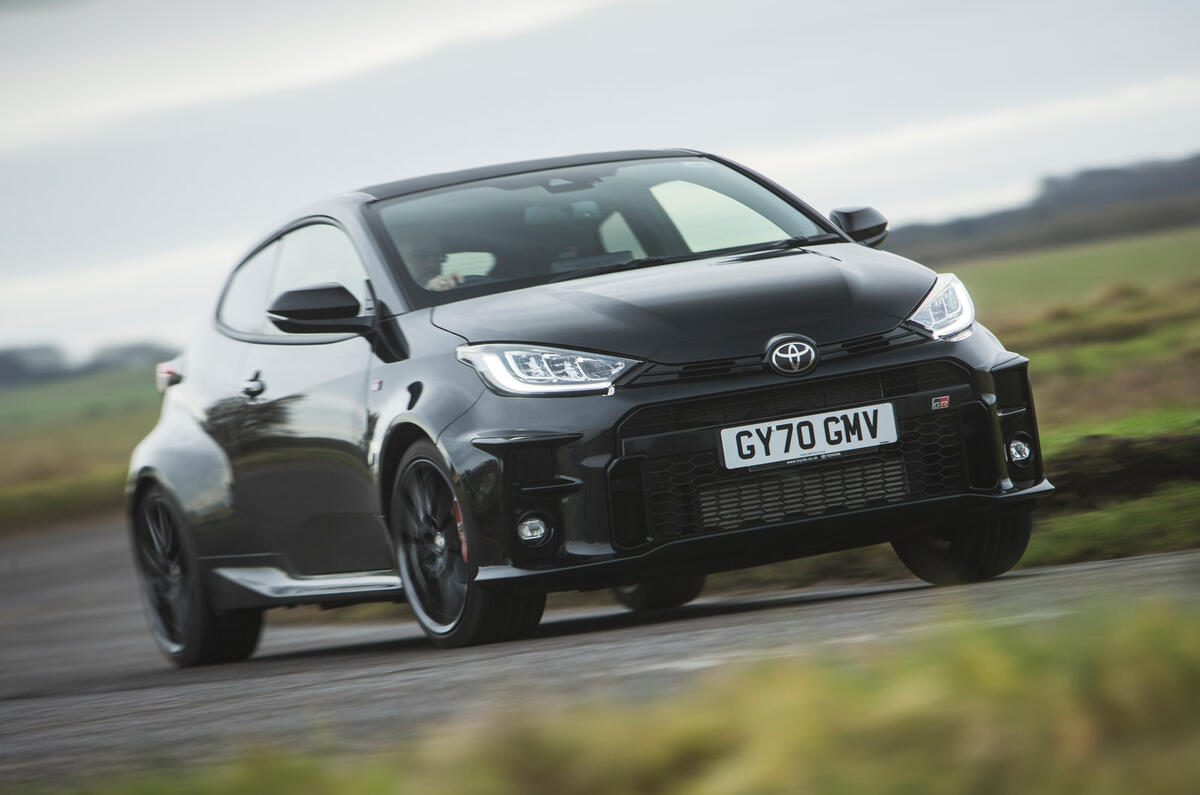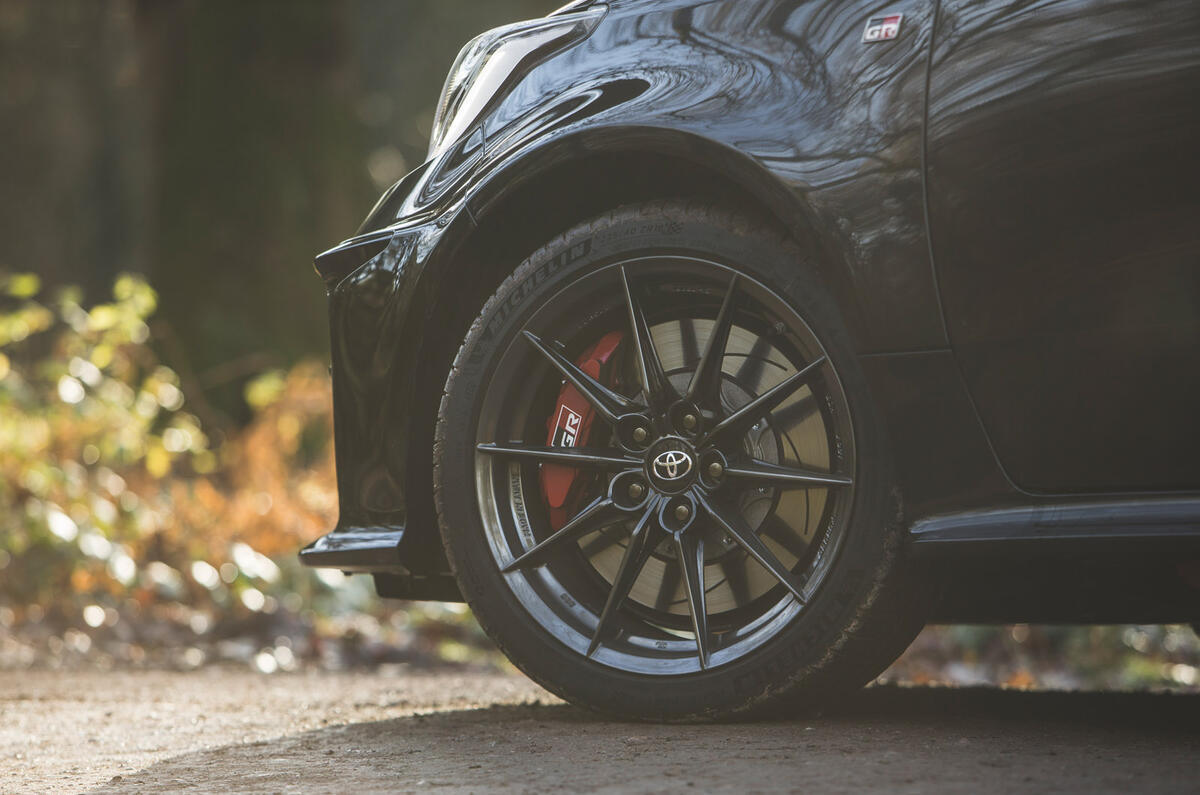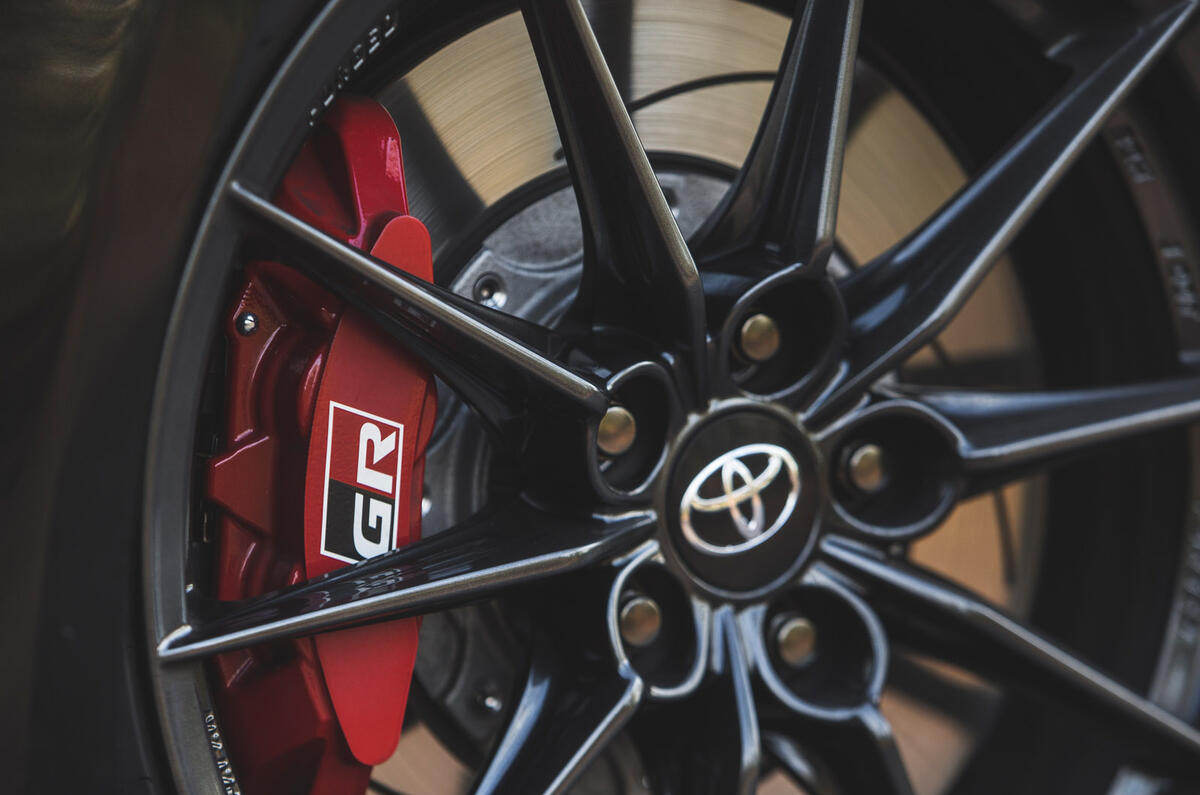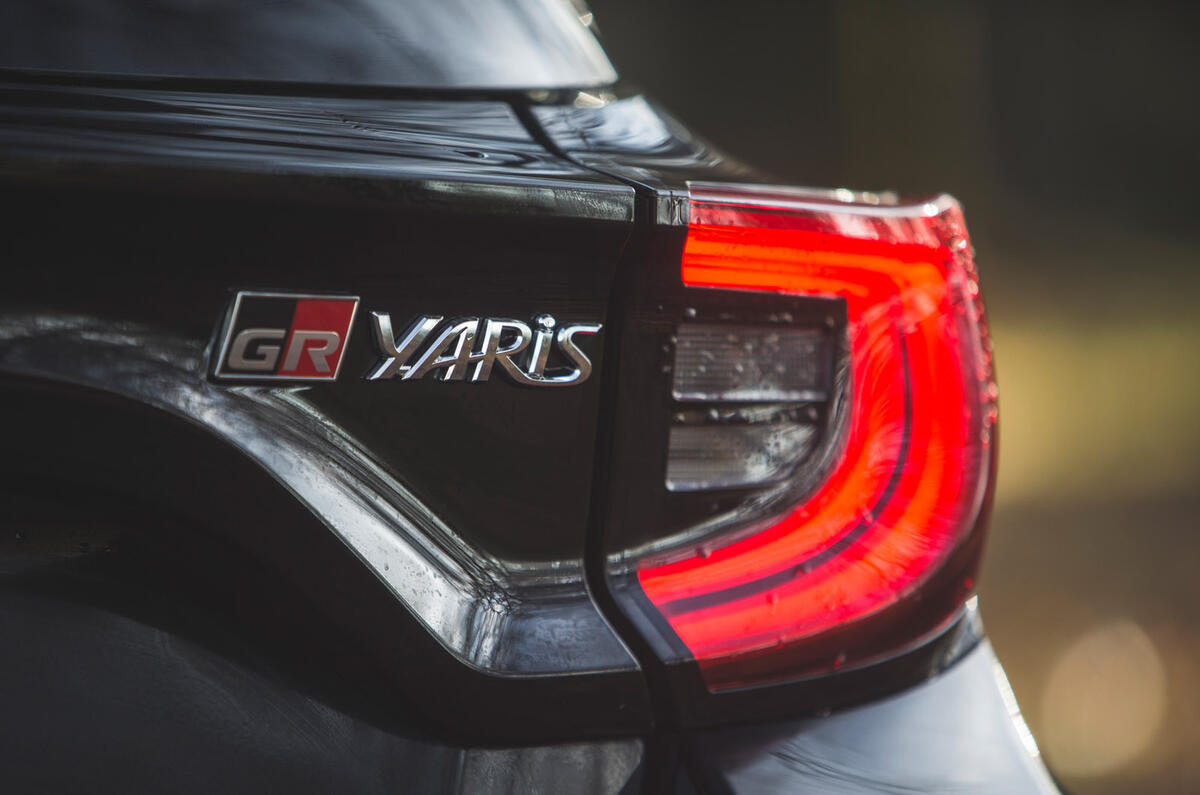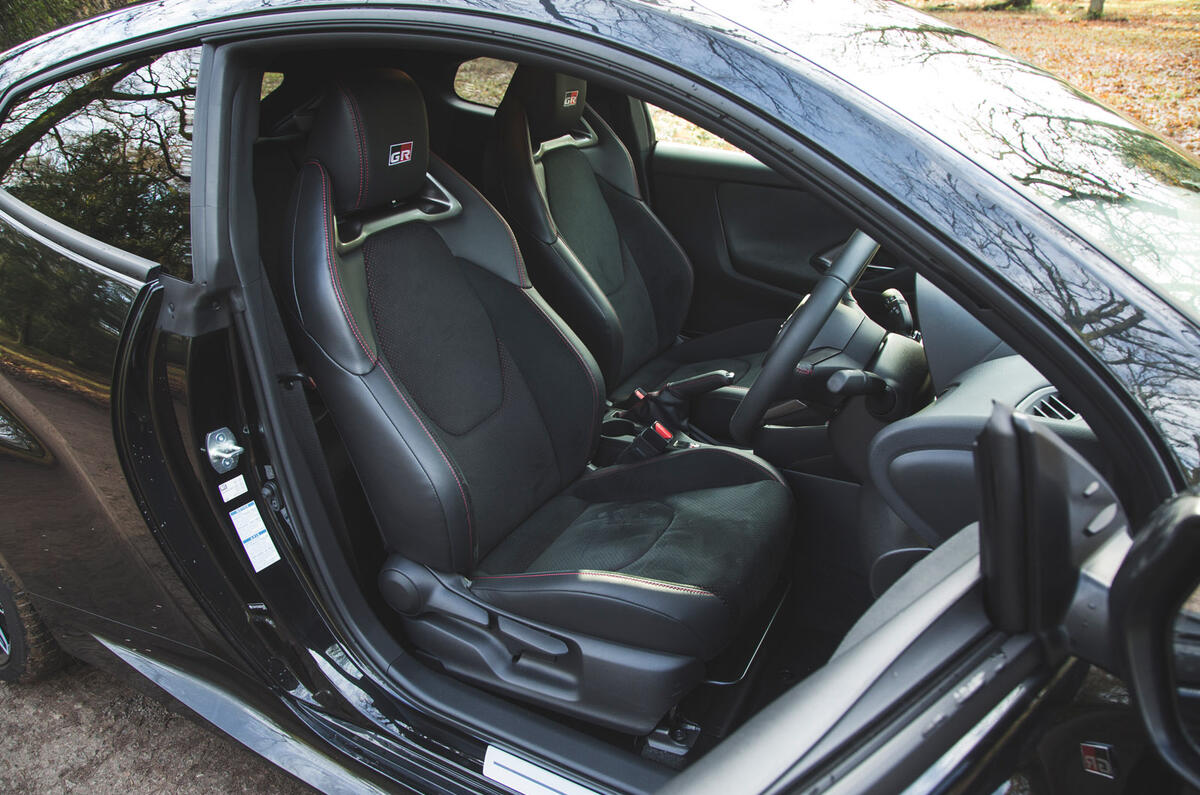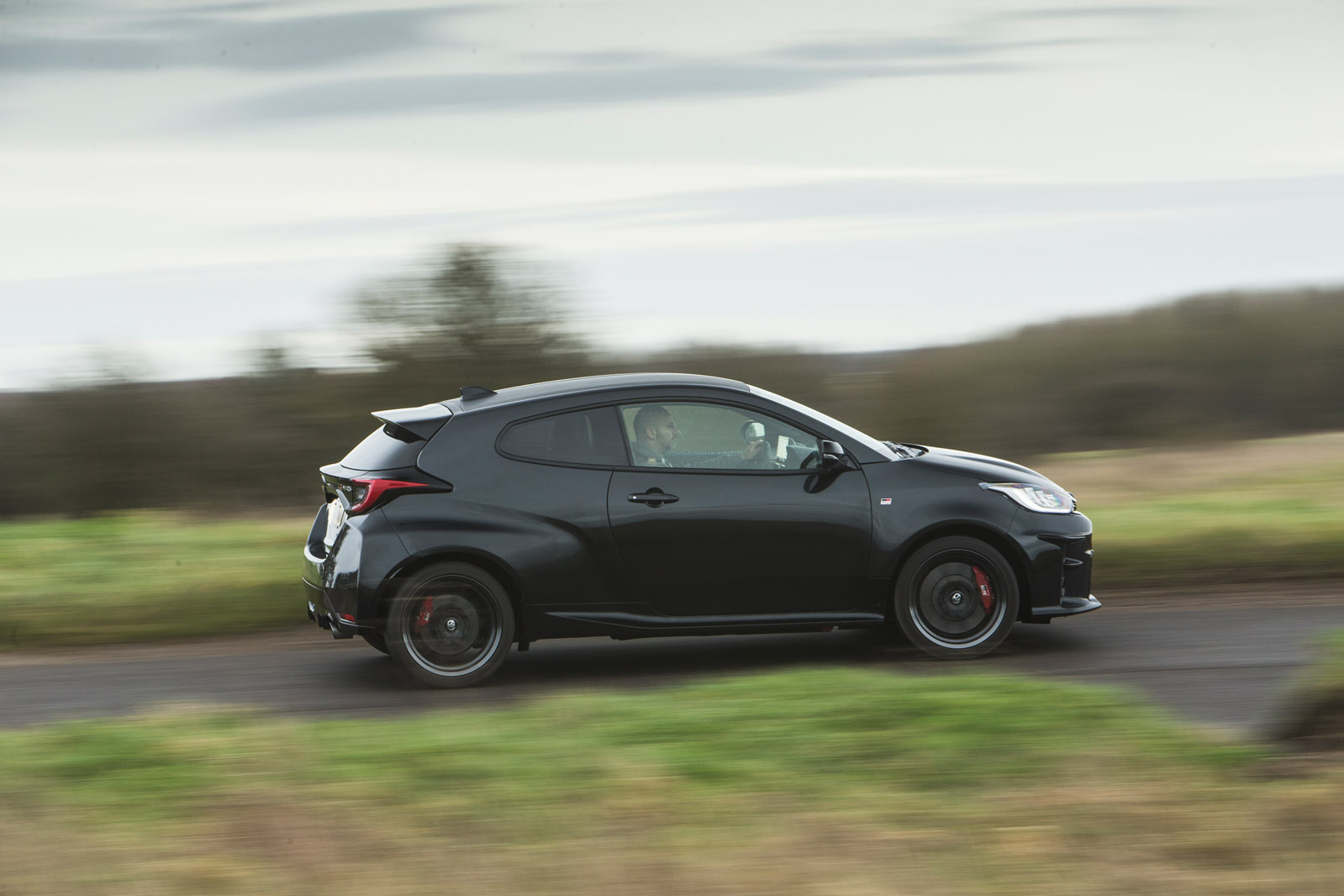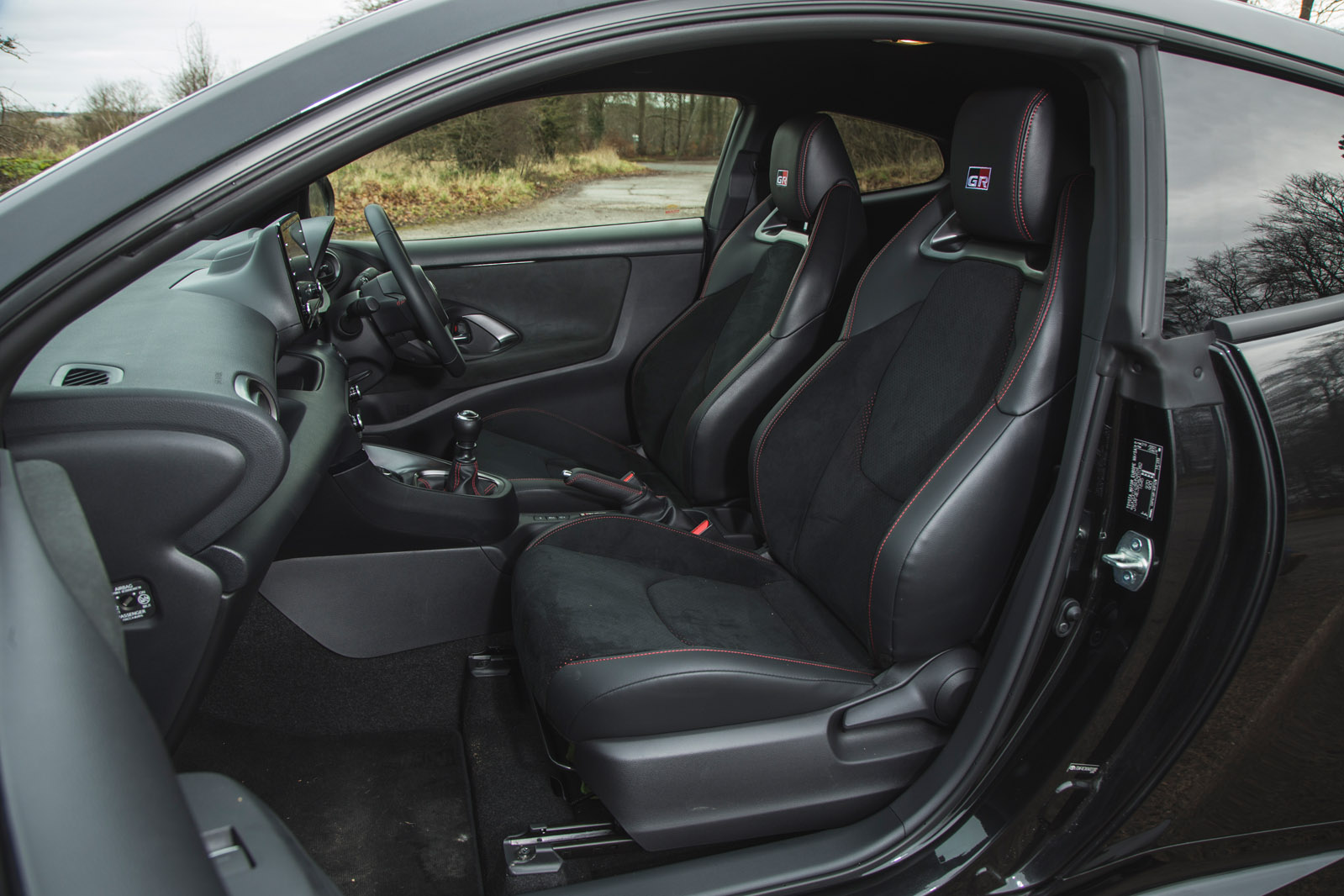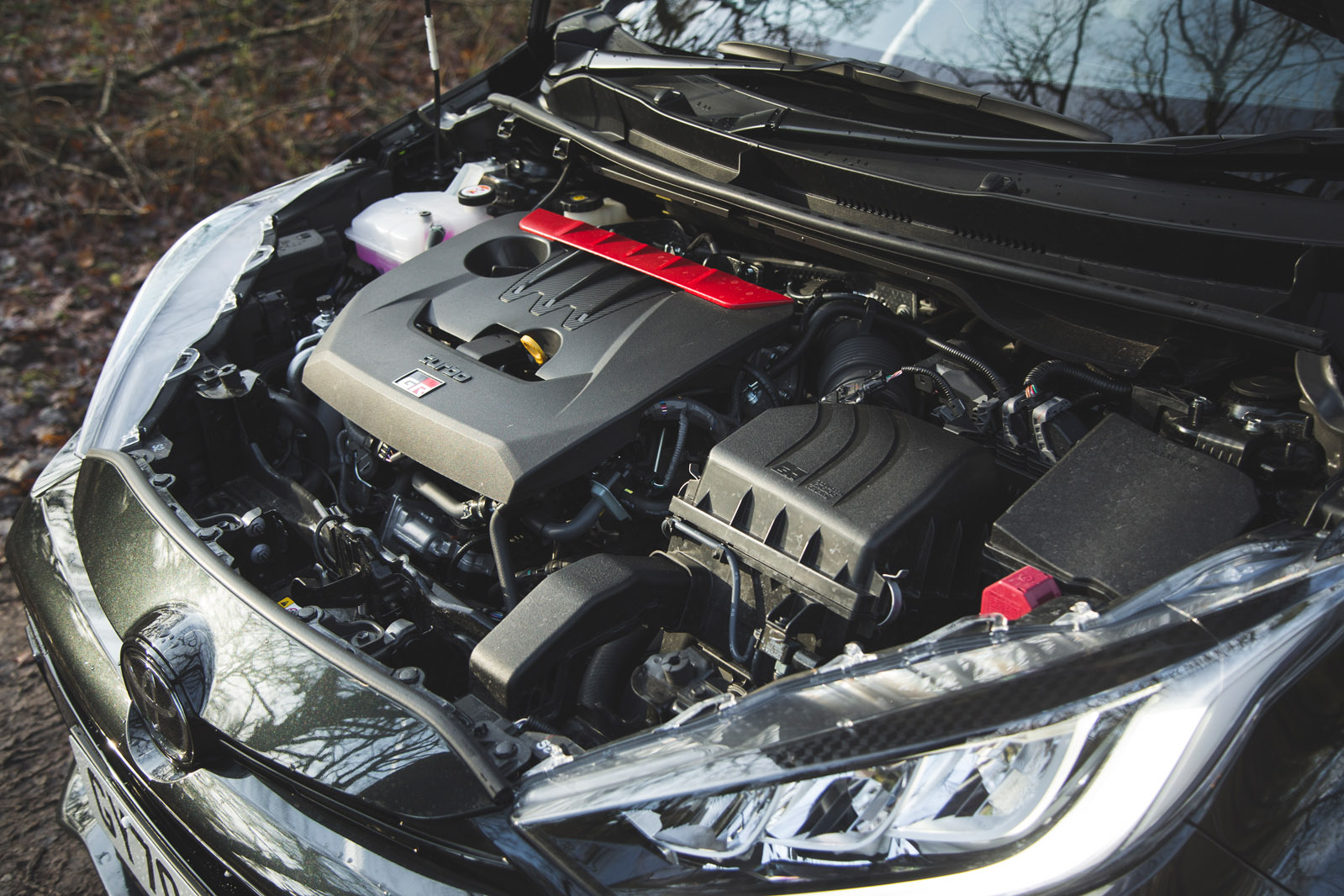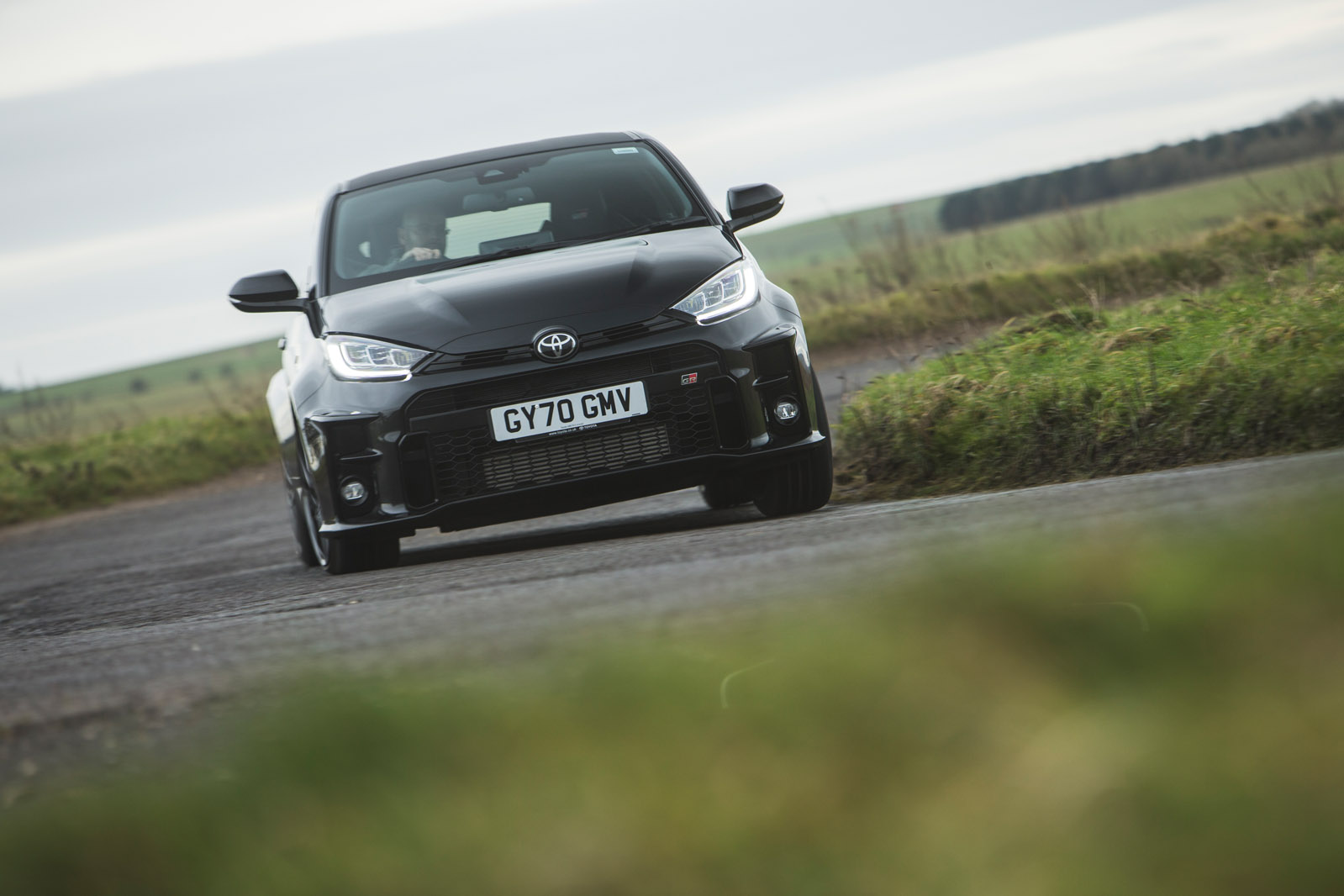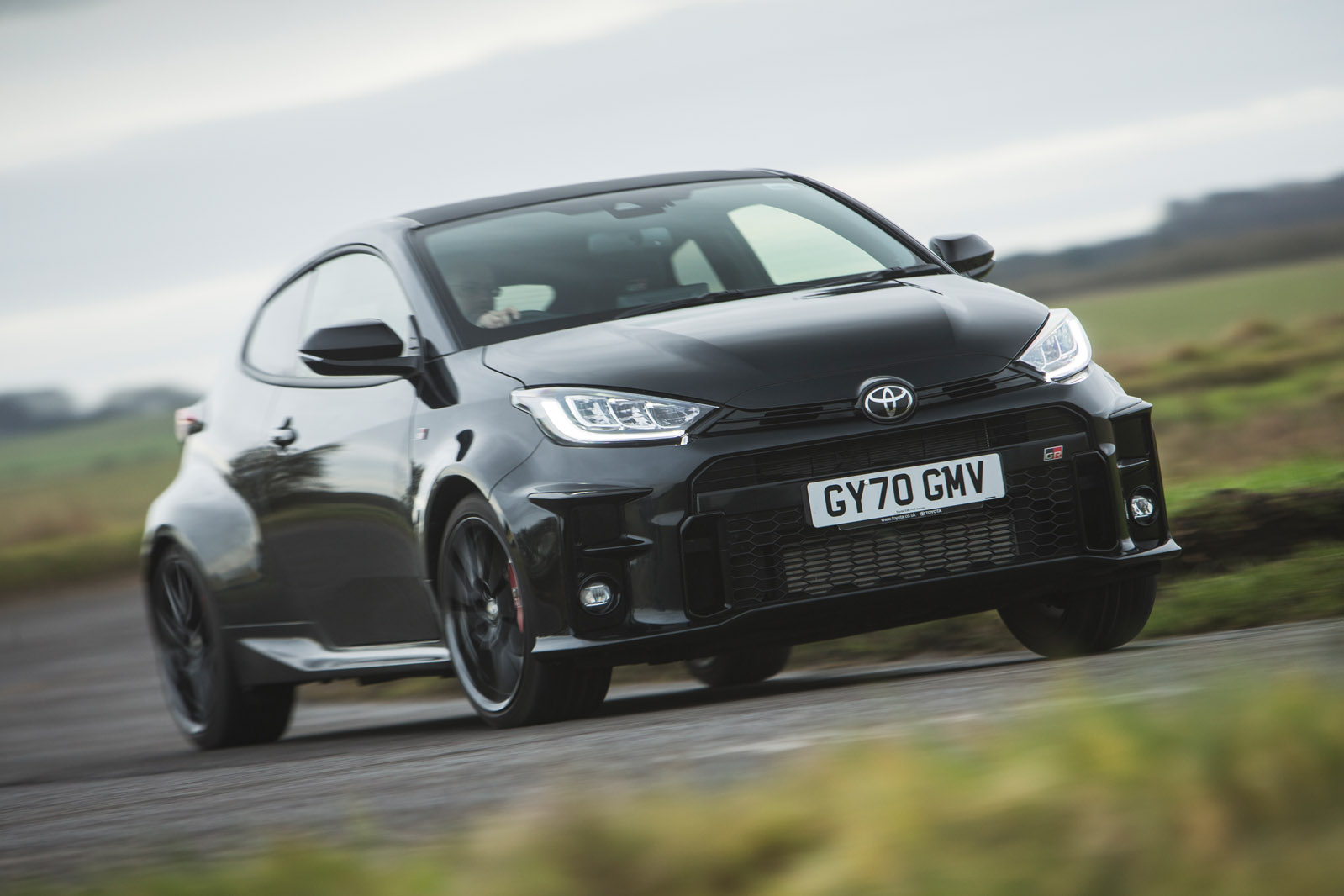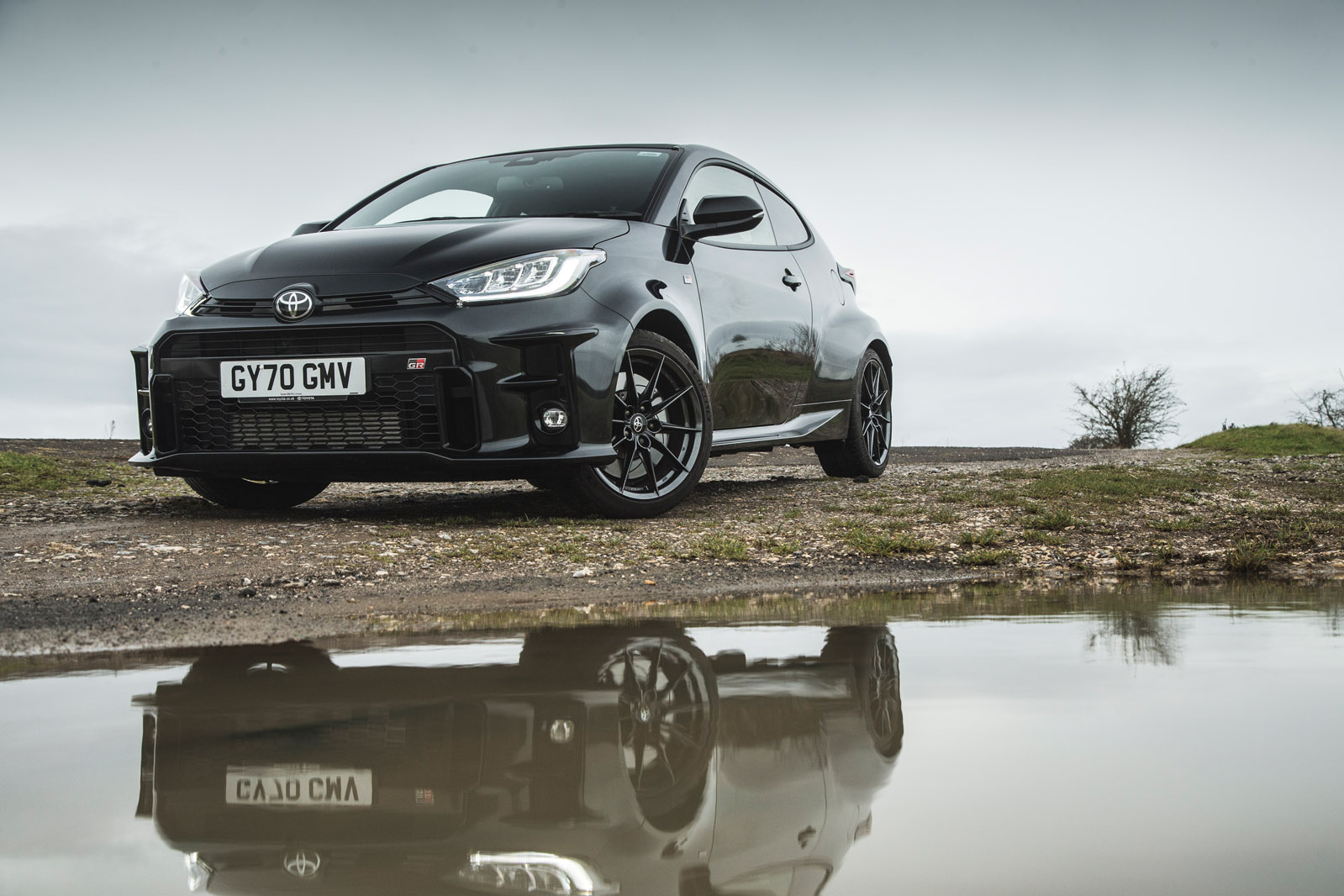To look at, the cabin of the GR Yaris doesn’t differ too greatly from that of the regular hybrid model. It continues to exude that slightly austere, monochrome sense of ambience common to most Toyotas, only with a relatively conservative sprinkling of additional performance-car addenda – think GR badging, Alcantara-like upholstery and large bucket seats.
Those chairs are firm but comfortable, and offer impressive amounts of support for your torso, hips and thighs. You sit in a fairly perched position, in relatively close proximity to the pedals, but our testers nonetheless agreed that the driving position was a largely comfortable one. The only real points of contention were the spacing of the brake and throttle pedals, which some argued made heel-and-toe downshifts slightly trickier to execute than was ideal, and the fact that the rear-view mirror is positioned in such a way that it obscures visibility through left-hand turns.
The largely sensible approach to ergonomics continues with the positioning of the gearlever, which sits 50mm higher up for easier shifts. Directly in front of that is the large rotary drive mode controller, which allows you to toggle between the three settings with ease. Elsewhere, just three visible, chunky buttons are housed on the centre console. These control the traction control, the stop/ start system and the rev-matching function for the manual transmission.
While the cabin itself feels snug, this only really serves to emphasise just how compact the GR Yaris feels on the road – particularly when you take the driver’s close proximity to the car’s primary controls into account. It might not be overtly sporty to look at, but it certainly feels like a focused and purposeful driving environment.
Practicality is limited. The rear bench is only really suitable for the smallest children, and the boot has just 174 litres of storage capacity – that’s limited even by supermini standards.
Toyota GR Yaris infotainment and sat-nav
All GR Yaris models come equipped with Toyota’s 8.0in Touch 2 infotainment system as standard. It features Bluetooth, DAB radio and USB connectivity, as well as Apple CarPlay and Android Auto compatibility.
Only Convenience Pack cars gain factory satellite navigation, which comes with an uprated eight speaker JBL sound system and additional driver assistance features. However, given that those smartphone mirroring interfaces work so well, and that Toyota’s infotainment systems aren’t the most graphically sophisticated anyway, we’d steer clear of the Convenience Pack altogether.
When your smartphone isn’t connected, the system is easy enough to use. It doesn’t look all that special, but the dedicated shortcut buttons that frame the screen make navigating the system a fairly simple undertaking – even though they are quite small. The physical volume controls on the steering wheel and at the base of the screen are welcome, too.



